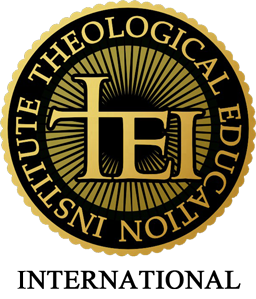On Film: Jesus, in the Face of His Enemies
John C. Rankin
(April 19, 2014)
In my book, Jesus, in the Face of His Enemies (available at the TEI Webstore), I write the first half through the eyes of the honest teacher of the law in Mark 12:28-34, whom I call Baruch. He is looking for the kingdom of God, and all his perspectives are faithful to that of a first century rabbi.
The major drama is during holy week leading up to Passover, and in it Jesus draws his sworn enemies into the freedom to ask him their toughest questions, to trip him up if possible. This level field proves to be the authority by which Jesus becomes the blameless Lamb of God, able to atone for the sins of humanity.
The goal of the book, and visually, the film, is to place us inside the storyline of Jesus in the face of his enemies, in the face of all the participants, and in his ministry to the poor and needy. The quality of his human relationships as Son of God and Son of Man sets the proper understanding of his Passion.
At present (December, 2013), a proposal by a successful film producer is being reviewed, for making the book into a docudrama, made for television and/or movie theaters and/or a television mini-series. When a working agreement is in place, the TEI will seek investors.
Here is an excerpt:
_______________
Then, glancing back one more time, Baruch saw Jesus and his disciples also heading toward town, and as soon as his colleagues noticed the same, they halted, and recalculated their direction to keep close at his heels. Jesus went into a local synagogue to teach, and as the Pharisees followed in, they saw a man standing there with a shriveled hand.
Thus, again, “looking for a reason to accuse Jesus … they watched him closely to see if he would heal him on the Sabbath.”
Jesus looked at the assembly, searching for expectation and hope, and likewise into the eyes of the crippled man. This man, if he were to be identified as a follower of Jesus by the religious authorities, could be expelled from the synagogue. He could be thrown out of his social network that helped provide for his needs, given his handicap in working and providing for himself.
Jesus looked into the eyes of the Pharisaical band, and posed a question. But Baruch now stood off to the side, identifying more as an onlooker than a Pharisee despite his attire.
“Which is lawful on the Sabbath: to do good or to do evil, to save life or to kill?”
Jesus continued to look straight at them, they moved their feet nervously as they averted the eye contact, and thus, “they remained silent.” The pregnancy of the moment of conflict draped the room, and indeed, the whole assembly was motionless, breathless, awaiting the words of Jesus.
“He looked around at them in anger and, deeply distressed at their stubborn hearts, said to the man, ‘Stretch out your hand.’ He stretched it out, and his hand was completely restored. Then the Pharisees went out and began to plot with the Herodians how they might kill Jesus.”
Baruch had never seen such intensely heated eyes in a man, of an anger rooted in mercy; and as displayed in the face of those who hated mercy.
Jesus stood in the face of his plotting enemies, and Baruch was captivated by the drama, thinking about nothing else as he returned to Jerusalem (pp. 8-9).
_______________
###


